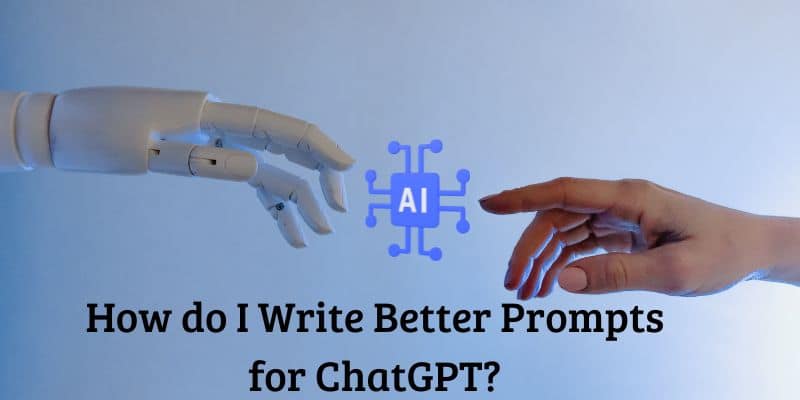The development of advanced language models like ChatGPT has revolutionized the way we interact with artificial intelligence. Whether you want assistance with writing, information on a specific topic, or even a friendly chat, these models can provide answers and generate content for you. However, to get the best results from these AI systems, it’s crucial to know how to write effective prompts. A well-crafted prompt ensures that ChatGPT understands your request and generates the desired response. In this article, we will discuss some essential steps to help you write better prompts for ChatGPT.
What is ChatGPT?
ChatGPT is an advanced language model developed by OpenAI. It’s based on the GPT-3.5 architecture and specifically designed to generate human-like text responses in natural language. ChatGPT is part of a family of AI models known as “Generative Pre-trained Transformers” (GPT), which have gained widespread recognition for their ability to understand and generate human-like text based on the input they receive.
ChatGPT is trained on a vast dataset of text from the internet, encompassing a wide range of topics and styles of writing. This extensive training allows it to perform a variety of language-related tasks, such as answering questions, generating creative content, providing explanations, and engaging in natural-sounding text-based conversations. It has applications in areas like chatbots, virtual assistants, content generation, and more.
One of the significant features of ChatGPT is its ability to respond contextually to user input, making it suitable for interactive conversations. It’s been used in various applications and services to create more engaging and interactive user experiences.
How to Create Better Prompts for ChatGPT?
1. Be Clear and Specific
Being clear and specific in your communication is essential, particularly when interacting with ChatGPT. It minimizes ambiguity, reducing the risk of misunderstandings and ensuring you receive accurate and relevant responses. Vague prompts often lead to less precise answers, while specific queries result in more focused and valuable information.
For example, asking, “Explain the impact of climate change on polar ice caps” is clearer and more likely to yield a targeted response than a broad question like, “Tell me about climate change.” Clarity and specificity enhance the effectiveness of your interactions with AI and promote more efficient and satisfactory outcomes.
2. Use Keywords
Ineffective communication with AI ChatGPT, the strategic use of keywords is paramount. Keywords are the anchor points that help AI models understand and respond accurately to your queries. By incorporating relevant keywords in your prompts, you guide the model towards the specific information or answers you seek.
For instance, when inquiring about artificial intelligence, including keywords like “machine learning,” “neural networks,” or “applications” ensures the response aligns with your intent. Keywords serve as beacons in the sea of information, enhancing the precision and relevance of responses, and making your interactions with AI more efficient and rewarding.
3. Structure Your Request
Structuring your request is a key element of effective communication with AI models ChatGPT. Whether in question or command form, a well-structured request streamlines interactions, enabling AI to provide more pertinent responses. Queries framed as questions, such as “What are the benefits of renewable energy?” often prompt concise answers.
Conversely, command-style requests, like “Explain the concept of blockchain technology,” encourage AI to offer informative explanations. Clear structure fosters clarity and aligns the AI’s output with your needs. It facilitates a smoother, more productive dialogue, ensuring that you receive the specific information or assistance you are seeking.
4. Provide Context
Offering context in your interactions with AI ChatGPT, is pivotal for obtaining relevant and accurate responses. Context provides essential background information or details that help AI models better understand your query.
For example, if you are discussing historical events, specifying the time period, location, and key figures can elicit more precise responses. Context enhances the AI’s comprehension of your request, allowing it to generate information or answers that are contextually accurate.
Whether discussing complex subjects or specific topics, the inclusion of context refines the AI’s responses, resulting in more tailored and valuable insights, making your conversations more meaningful and informative.
5. Be Polite and Respectful
Maintaining a polite and respectful tone in your interactions with AI, such as ChatGPT, fosters a positive and productive exchange. While AI models lack emotions, courtesy is essential for effective communication. Politeness in requests, such as using “please” and “thank you,” contributes to a more friendly and professional dialogue.
Treating AI respectfully, even in moments of frustration, ensures a respectful interaction, which is especially significant when using AI in customer service or professional contexts. Being polite and respectful creates a more amicable environment and encourages AI to assist you more effectively, enhancing the overall quality of your experience.
6. Experiment and Iterate
Experimentation and iteration are valuable practices when interacting with ChatGPT. These processes involve trying different prompts or approaches to find the most effective way to obtain the desired information or response. Not all queries yield perfect results initially, and AI models may interpret prompts differently.
By experimenting and iterating, you can refine your prompts, adapting them to the AI’s behavior, and improving the quality of the interactions. This approach allows you to fine-tune your requests, ensuring that you receive more accurate, relevant, and tailored responses, ultimately enhancing the efficiency and satisfaction of your interactions with AI.
7. Set Appropriate Parameters
Setting appropriate parameters in your interactions with AI, such as ChatGPT, is crucial for tailoring responses to your specific needs. By specifying parameters, you guide the AI in delivering responses that align with your requirements.
This can include requesting concise answers, detailed explanations, or responses within a certain time frame. These parameters help you control the depth and scope of the information provided, ensuring it meets your expectations.
By clearly defining your expectations, you optimize the AI’s performance and receive responses that are not only relevant but also customized to your preferences, enhancing the overall effectiveness of your interactions.
More Tips for Write Better Prompts for ChatGPT
Here are some additional prompt-writing tips to further enhance your interactions with AI ChatGPT:
- Use First-Person Perspective
- Break Down Complex Questions
- Be Mindful of Jargon
- Reference Recent Information
- Express Curiosity
- Use Comparisons
- Specify the Format
- Provide Constraints
- Request Multiple Viewpoints
- Feedback and Clarification
Conclusion
In conclusion, writing better prompts for ChatGPT is essential to ensure you receive accurate and valuable responses. By following these seven essential steps, you can communicate your requests more clearly, enhance the quality of the information you receive, and have more productive interactions with the AI model. Whether you are seeking information, assistance with writing, or just a friendly chat, mastering the art of prompt writing will undoubtedly improve your experience with ChatGPT and other language models.
You may also like:







